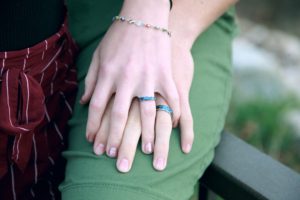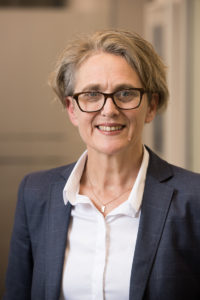Mummy who are my parents? The difficulty with the ‘other intended’ parent, artificial insemination and divorce!
The area of artificial insemination and the declaration of parentage after the breakdown of a de facto relationship or where the sperm donor is known, is an area that produces complexity, unusual facts, and not always positive outcomes.
Below is a summary of the most recent and relevant case law in the area of artificial insemination and who is a parent.
The matter of Wall v Pearson which was heard on 4 October 2016 in Adelaide on an interim basis, concerns a lesbian couple, Ms Wall who with the applicant and Ms Pearson the respondent. Ms Wall and Ms Pearson began living together in mid-2004 and on or about 13 March 2016 their relationship ended.
The Facts.
- Ms Wall and Ms Pearson have 2 children one born in 2008 (“Y”) and the other born in 2012 (“X”). Ms Wall was the biological mother of “Y”.
- No name is entered on the child’s birth certificate under the heading “father”.
- Ms Pearson is the biological mother of X. Ms Pearson is entered on this child’s birth certificate as her co-parent in lieu of the entry for father.
- At the time of separation Ms Pearson left the property that they were residing in and took the child “X” with her.
- The children were conceived artificially through sperm provided by separate donors.
The Findings.
Although the donors were known to Ms Pearson and Ms wall, under section60 H (4), the donors are not legal parents of the children.
The Court found that the parties were living in a de facto relationship at the time of conception of the children.
The difficulty of this case, was not so much the issue of artificial conception and whether one of the parties was a parent, but what to do in circumstances where the children had two different biological mothers and although lived together for a period of time- their lives had significantly changed because the children were now physically separated in their living arrangements.
The Court found that the focus, had to be what was in the best interest of the children and also found that both parties were parents under section 60 H (1) of the Family Law Act.
The case of Freeman and Bowman [2015] Family Court of Australia, is case where a Judge was asked to make a declaration in relation to parentage of a child.
The Facts.
- This case involved a lesbian couple, Ms Freeman as the applicant and Ms Bowman as the respondent.
- At the time of trial, Miss Bowman had chosen to not participate further and the Judge was satisfied that although Ms Bowman chose not to participate in the proceedings she was provided with an opportunity to do so.
- The child had been born in 2011 via artificial insemination.
The Findings.
The Judge looked at section 60H of the Family Law Act 1975 (Commonwealth).
In order to seek parenting declaration under section 60 H the following terms must be fulfilled:
- The child is born to a woman as a result of the carrying out of an artificial conception procedure while that woman was married to, or a de facto partner of another person (the other intended parent), and
- The woman and the other intended parents consented to the carrying out of the procedure and any other person who provided genetic material used in the procedure consented to the use of the material and artificial conception procedure
What makes a relationship a de facto relationship?
The term de facto relationship is defined in the Family Law Act where a person is in a de facto relationship with another person and if the persons are not legally married to each other and they are not related by family and they lived together on a genuine domestic basis and have a relationship as a couple.
In addition, the court can consider whether 2 people are living in a de facto relationship by looking at any of the following:
- the duration of the relationship
- the nature and extent of a common residence;
- whether a sexual relationship exists
- the degree of financial dependence or interdependence and any other arrangements for financial support between the parties
- the ownership use and acquisition of property
- the degree of mutual commitment to a shared life
- whether the relationship was registered
- the care and support of children and
- the reputation and public aspects of the relationship
In this case of Ms Freeman and Ms Bowman, the Court found that a de facto relationship existed at the time of conception and the Judge in this case looked at the time during which the parties live together, the degree of financial support provided and the support provided to the child after he was born and a degree of mutual commitment to a shared life existed.
The case of Gear and Anor and Faraday and Anor was a difficult case, which was determined by Her Honour Judge Henderson in Sydney in December 2015.
Although the 4 adults involved started with positive intentions, things soured quickly when the reality of parenting, decision-making and conflict of interests found that positive intentions were simply not enough.
The Facts.
- The child, known as “X” to protect his identity was born in 2004 via artificial insemination. X’s biological mother is Ms Faraday and his biological father is Mr Gear.
- Mr Gear is named on X’s birth certificate
- When X was conceived, Ms Faraday was in a committed relationship with Ms Hugo.
- Mr Gear was in a committed de facto relationship with his partner, Mr Risk.
What did the Court have to decide ?
- Who are the parents of X? Was it Ms Faraday and her partner or was it Mr Gear the biological father and Ms Faraday the biological mother?
- Who has parental responsibility for the child X?
Although these questions may appear simple on first reading, the truth is there is a level of complexity that the Court had to work through.
Her Honour (with possibly some level of frustration) stated the following:
“We have a situation of four adults who have no long-term relationship with each other, no experience in parenting a child together or having lived together in any domestic situation, no commonality of interest such as vocational hobbies, determining to have a child and since then setting it out in a written document how they would share the parenting of their child before the child’s birth. I recite these facts to support the reality that unsurprisingly co-parenting X has not progressed well at all.”
The Findings.
Her Honour found that although the four adults wanted what was best for X they saw what was best for him from their own individual filters.
- From the time X was born, the dads were spending at least twice a week with the child and things were progressing. In 2010 the relationship between the four adults broke down irretrievably.
- In hindsight it seemed that the dads wanted too much too soon (in my experience this is too common and sadly causes unnecessary distress and conflict).
- The biological mother Ms Faraday felt threatened and felt that her family privacy was compromised and invaded by Mr Gear and his partner. She said “every email, every handover, every Skype, every preschool school event, school event, every soccer match, every public events, every doctors visit for X or myself, every Facebook group, every visit to a therapist is opportunity for Mr Gear and Mr risk to invade my life.”
- There was a disconnect between what the parties expected, especially the fathers’ in this case and the reality of the situation.
- The mothers’ could not deal with the biological father at-they could barely tolerate his partner.
- The fathers in this case were insisting on a 6 out of 14 day care arrangements. Her Honour observed that such an arrangement would never work in this kind of relationship. A shared care arrangement is one that only works where a high level of cooperation, a high level of trust and some to be a respect for each other and similar parenting styles and values are evident.
- Even though Mr Gear was the biological father of the child, Her Honour found that Mr Gear was not a legal parent of the child X.
- The legal parents were Ms Faraday and Ms Hugo and they share to the exclusion of Mr Gear equal shared parental responsibility.
It was certainly open to Her Honour to find that parental responsibility could be shared by three people, but in this case she found it was not in the best interest of X to have his biological father participate in the sharing of parental responsibility.
Cases involving artificial insemination, deciding who is a parent where people separate are fraught with complexities and issues that at times are beyond the scope of Family Law. The old -Chinese Proverb, comes to mind –
“when people sleep in the same bed but have different dreams then chaos and conflict ensues.”
The above is intended as information only. We specialise in same-sex relationship issues, including artificial insemination and parenting matters.
Please contact our Katy Jenkins for more information- katy@cominoslawyers.com.au or call us on 02 8999 1800.


